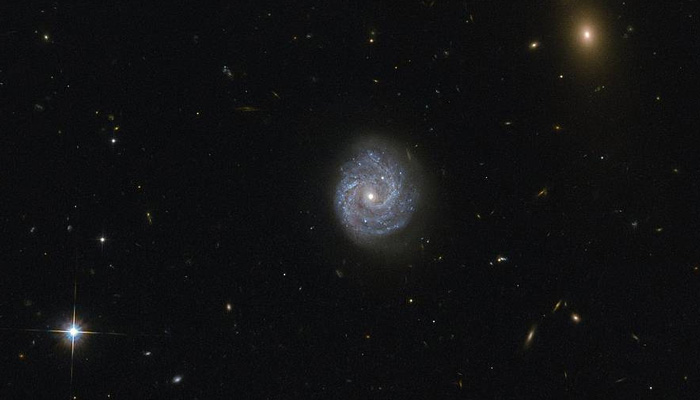In an astonishing research, scientists have discovered such a galaxy that has no dark matter present inside it. Yes, this ghostly galaxy is devoid of any dark matter and hence defies the theories that claim that dark matter is the most abundant material found inside galaxies. The name of the mysterious galaxy is NGC 1052-DF2 or DF2 and as per the researchers, this galaxy has 400 times less dark matter than expected for an object of this size and volume.
The ghostly galaxy is only made up of the mass of star clusters that are present inside it. The scientists say that either the galaxy contains very little amount of dark matter or it is completely devoid of that. The newly found galaxy will help researchers get more information about how galaxies are formed and also it will also strengthen argument regarding the existence of the dark matter. Lead author of the study Pieter van Dokkum, a researcher from Yale University, said that this new galaxy challenges the standard idea of how galaxies are born. Previous theories suggested that galaxies are formed due to the interaction between normal matter and dark matter. But, the absence of dark matter in the DF2 galaxy has challenged those theories.
Van Dokkum said to Space.com that the dark matter is apparently not a requirement for the formation of galaxy. “Maybe the only way to form a galaxy is to have dark matter, but apparently you can also form galaxies without the aid of dark matter,” said van Dokkum. He further added that they always thought that whenever the saw stars they saw dark matter but this DF2 galaxy has pushed them to change their perception. The scientists are now thinking that there might be many such galaxies in the Universe that might be devoid of dark matter or have very tiny amount of it.
For the research, van Dokkum and his team used the Dragonfly Telephoto Array present in New Mexico to look at big, faint galaxies that might have gone unnoticed by other astronomers. During their observation, the researchers found out this DF2 galaxy that was devoid of any dark matter. The galaxy was almost the size of our Milky Way but it had around 200 times fewer stars than our galaxy. The latest study was published in the journal Nature.
